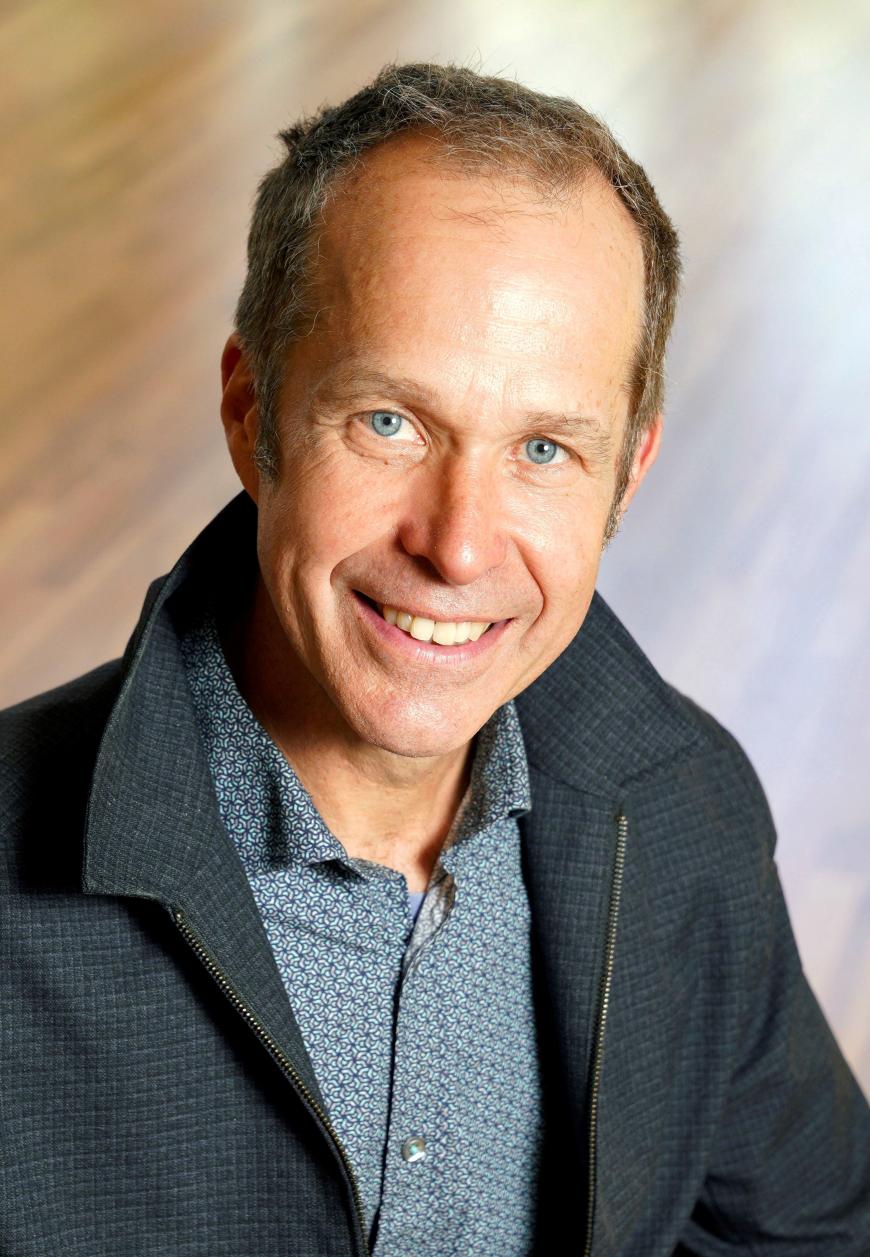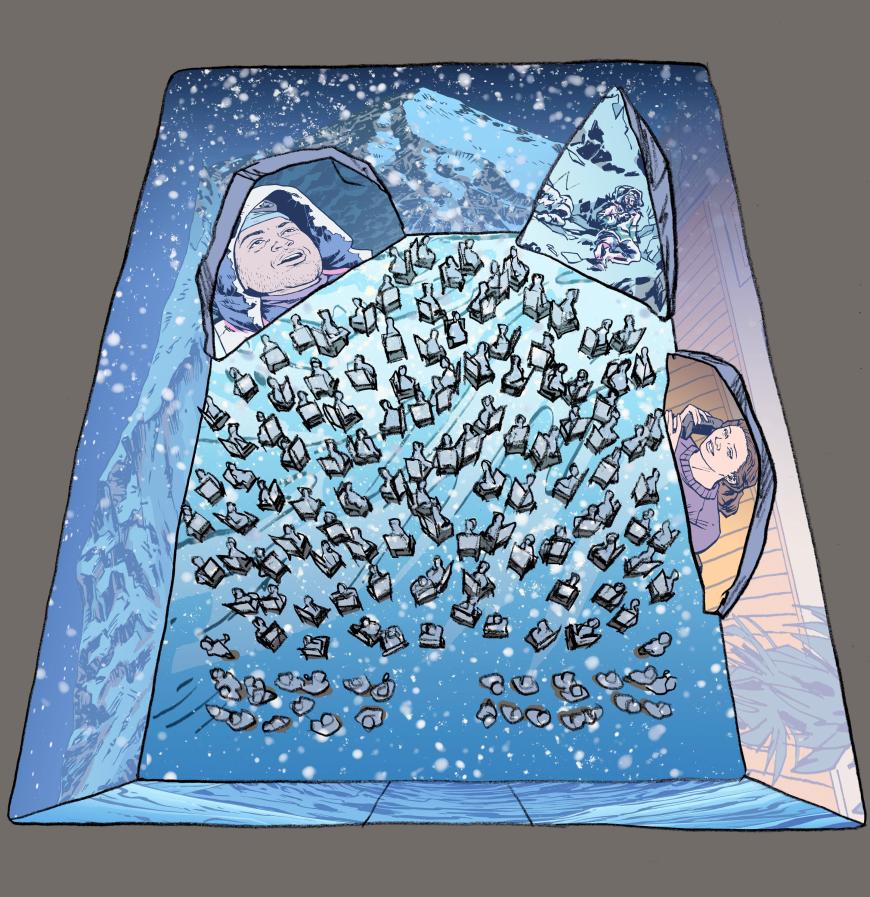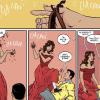
A night at the opera often involves attire of black tie and glitzy gowns or jeans topped with a chic designer-label jacket. But the kind of haute couture director Brian Staufenbiel hopes audiences will wear to attend his latest project, Everest: An Immersive Experience, runs more REI than YSL.
The way Staufenbiel tells it, audience members kitted out in hooded parkas, Gore Tex hiking boots, and fleece hats designed for minus 30 degrees Fahrenheit might feel their experience deepened. “There is no dress code,” he said in a deadpan manner during a video interview. “The more you get into it, though, the better.”
The project’s Feb. 3–12 performances at San Francisco’s Z Space are an expanded version of the animated film Staufenbiel conceived and directed for Opera Parallèle, Everest: A Graphic Novel Opera, which streamed in 2021 in a co-production with the Dallas Opera. “It’s a completely different experience from a flat screen to being in a large theater,” he said.
Both the new immersive experience and the animated graphic novel film are Staufenbiel’s reimagining of the one-act opera Everest by English composer Joby Talbot and librettist Gene Scheer, based on the events of the 1996 climbing tragedy.
From the moment audiences enter Z Space, they’ll be immersed in an environment that’s designed to transport them high into the Himalayas. In the lobby’s “base camp,” set up as an interactive installation, they can snuggle up to the bar to order a “White Out” (white Russian) or a “Wind Chill Warmer” (spiced apple cider-rum, with a nonalcoholic option), among other craft cocktails, and then mingle standing up or recline inside cozy tents.
Then with drink in hand, or not, they can navigate the snowy tundra into the performance arena to find a seat on one of many armless chairs that will allow an easy swivel to follow the 360-degree unfolding events. Viewers will be invited to don a white rain poncho so that they’ll fuse with the snowy, mountainous landscape projected onto four 12-foot-tall contiguous fabric walls that are internally ringed by three-dimensional rock formations. (Z Space’s vertiginous bleacher seating has been removed for the performances.)
“You’ll feel like you’re in the film itself,” Staufenbiel said before correcting himself: “No, you are in the film.”

What’s more, through a sophisticated directional surround soundscape, the audience will hear every crack of ice, wind howl, and the climbers’ voices. “You’ll feel surrounded — visually and aurally,” Staufenbiel said, though he noted the immersive experience won’t offer smell-o-rama (no scent of frozen Mars bars — apparently an Everest base camp delicacy —being deep-fried) or temperature special effects.
Everest tells the true story of three climbers — Rob Hall, Doug Hansen, and Beck Weathers — and their ill-fated attempt to reach the summit of Mount Everest. The opera wasn’t drawn from the popular nonfiction book Into Thin Air by Jon Krakauer detailing the disaster, however. “It’s based on that moment of history on the mountain and the many interviews Gene did with family, friends, and participants related to the tragedy,” said Staufenbiel. “It’s an epic story all about man’s foibles.”
The performances feature no live singers or orchestra but use prerecorded music from the 2021 animated film, which was conducted by Nicole Paiement, who is Opera Parallèle’s general and artistic director and conductor and Staufenbiel’s creative partner and wife. “She’s always involved,” he said.
The film’s cast recording features tenor Nathan Granner as Rob Hall; mezzo-soprano Sasha Cooke as Hall’s wife, Jan Arnold; tenor Kevin Burdette as Beck Weathers; and baritone Hadleigh Adams as Doug Hansen. Other artists behind both the film and the immersive experience include Mark Simmons (illustrations) and David Murakami (projection designs).
Z Space offered Staufenbiel most of what he wanted for this presentation, though he would have liked to have had projections in the lobby. As he considers other wider opportunities for the work, he thinks about how an even bigger venue might offer more room to spread out so that the flexible production can be mapped to a space for 50 people or for 500.
For some time Staufenbiel has experimented onstage with immersive opera experiences. He cited the use of rain ponchos for some audience members in his 2015 Opera Parallèle production of Tarik O’Regan’s Heart of Darkness at Z Space. More affordable projectors, he said, have made it possible to further explore his interest in immersive theater.
“I’ve always wanted to find the right project to create an immersive theatrical experience, and Everest seemed perfect,” he said. “I think it’s a masterpiece. Not only is the story compelling, but it’s fantastic to have a piece that is so well crafted. You have to love it.”

Unlike an opera presented in a proscenium-style theater, this production required the kind of planning it takes to climb a mountain, said Staufenbiel, a former alpinist. “It’s a massive undertaking,” he said. “I could definitely relate to climbing a serious mountain. Each person does it for different reasons ... connecting with nature, conquering their fears.”
But he resisted a suggested analogy between climbers who’ve reached a summit and how he feels once a new creative project is launched. “Once a production comes to fruition,” he said, “I don’t feel like it’s conquering something.”
As the Z Space audiences experience the climbers risking their lives on the icy mountaintop, Staufenbiel will be watching the viewers, considering his own artistic risk and that of Opera Parallèle’s in staging the production. The scale of Everest: An Immersive Experience was a consideration for the innovative boutique opera company, he said: “We measured the risk, and it’s not as daunting as climbing Mount Everest but a natural progression of what Opera Parallèle is.”
That said, artistically the project is the biggest professional risk in Staufenbiel’s career, he said, but one he’s willing to take. “Because when you do something that hasn’t been done before, you don’t know what the outcome will be. I think most people create something to be experienced by an audience — and that’s who I’m working for.”




